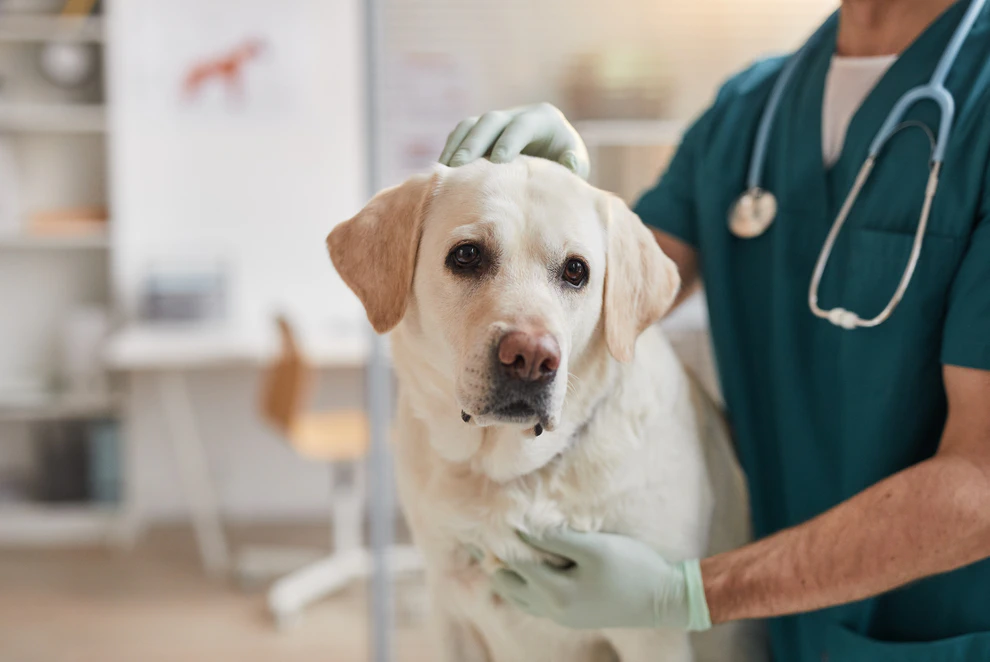How Health Issues Influence Behaviour
Animals, much like humans, communicate discomfort or illness through changes in their behaviour. When dogs experience pain or sickness, their instincts lead them to behave in ways that help them avoid further discomfort and stay safe.
Common ways medical problems influence dog behaviour include:
Reduced Activity Levels: dogs that are feeling unwell often show decreased activity. They might play less, sleep more, and interact less frequently with family members or other dogs.
Increased Irritability: Ongoing pain, even mild pain like arthritis, can cause dogs to become unexpectedly aggressive or defensive.
Changes in Appetite or Thirst: Health issues like diabetes, kidney disease, or thyroid disorders can significantly change your dog’s Appetite or thirst, leading to unusual behaviours related to hunger or discomfort.
Altered Motivation: Why Your dog Acts the Way It Does
Pain alters motivation in favour of avoidance and defensive behaviours.
Every behaviour your dog exhibits has a biological reason behind it. Behaviour usually related to survival, safety, or meeting basic needs will be highly motivated. When our dogs are unwell, their motivations shift.
For example, if your dog feels constantly hungry or thirsty due to an illness, it might become protective or even aggressive around food or water, even towards trusted family members. Water and food suddely are really important for survival and guarding it becomes more motivating.
Pain also causes subtle/small changes in normal behaviours, such as gait abnormality in arthritic dogs. The lameness that these animals display is an adaptation into a compensatory pattern that the lameness is not seen. Compenstion to lamness allows the dog to continue to move whilst experiencing reduced discomfort. This type of adaptation can persist long after the pain has subsided and often the behaviour is part of the compensation.
Understanding this shift can help identify health problems early and help us understand that training may not be the correct solution.
Common Medical Conditions That Affect Behaviour
Several medical conditions are known to cause noticeable behavioural changes, behaviour is often the first diagnostic we see.
Painful conditions such as Arthritis, dental issues, and injuries can make dogs irritable or defensive. For example, a dog with arthritis might become aggressive or defensive when touched or approached unexpectedly. Ofter more distructive after a walk, unable to settle after a long walk.
Neurological disorders, these are brain-related issues like tumours, epilepsy, or seizures can trigger sudden aggression, confusion, or anxiety. Often having a knock on effect to reduced sleep or rest, which increase behavioural issues.
Hormonal imbalances such as thyroid disorders, such as hypothyroidism or hyperthyroidism, can result in increased irritability, anxiety, or unexpected aggression.
Metabolic Diseases are less common but Conditions like diabetes, kidney disease, liver disease, or adrenal issues can slowly but consistently impact your dog’s mood and behaviour and require a combined behavioru and vet support.
Recognizing Signs of Pain in dogs
Evaluation of your dogs behaviour. When answering the following questions a trend to mostly left-sided marks suggests a consistent behavioural pattern, whereas a trend to the right indicates less consistency and a greater probability that there is an underlying medical condition. This should be taken only as a guide, but a strong bias to the right should prompt an increased depth of medical investigation even in the relative absence of conventional physical indicators of disease.
Does the problem behaviour occur in response to an external event? ALWAYS / NEVER
Does the problem behaviour occur in response to the same range of stimuli? ALWAYS / NEVER
Does the problem behaviour occur in a well defined set of contexts? ALWAYS / NEVER
Does the animal easily respond to environmental cues while performing the problem behaviour? (Is the behaviour easily interrupted by the opportunity to engage in other activities?) ALWAYS / NEVER
Does the behaviour stop spontaneously? ALWAYS / NEVER
Three or more NEVER there is a greater probability that there is an underlying medical condition.
Is this individual’s behaviour typical of that which would be expected for its age and developmental circumstances? YES / NO
Is the current behaviour characteristic of the individual’s previous adult pattern of behaviour? YES / NO
Can the change in behaviour be linked to an identifiable change in the environment or a significant experience? YES / NO
Is this a normal but unwanted behavioural response (for example, food-guarding behaviour)? YES / NO
Two or more NO there is a greater probability that there is an underlying medical condition.
This should be taken only as a guide, but a strong bias to the right should prompt an increased depth of medical investigation even in the relative absence of conventional physical indicators of disease.
Additional Behavioural Signs to Monitor
The above quiz is only a strong indication that something might be medical. Pay close attention to your dog and if you notice these potential signs of underlying health problems:
- Decreased playfulness, activity, or interaction, where normal they were active. ‘They are just slowly up’ is often something else.
- Increased anxiety, fearfulness, or nervousness, particularly to sound.
- Sudden aggressive or defensive behaviour, appears random or out of the blue.
- Changes in grooming habits, such as excessive licking or scratching, licking paws or one site on the dogs body.
- New or unusual eating and drinking behaviours, i.e. wont eat from their normal bowl, only drinks water in strange places.
- Reluctance or avoidance of normal activities, like walks or playing.
How Behaviour Helps Diagnose Medical Conditions
If your dog shows behavioural changes, the first step should always be a thorough veterinary check-up. Behaviour itself is a critical diagnostic tool a good behaviourist can complete an assessment to send to your vet to support investigations. Observing how and when behaviour changes occur can help determine if further medical testing is needed.
If your dog’s behaviour changes consistently in response to specific triggers or situations, it likely indicates a behavioural issue. However, if the changes are unpredictable, random, or don’t match typical responses to their environment, medical issues might be involved, and further investigation is advisable.
Why Early Intervention Matters
Identifying medical causes of behavioural issues early can significantly improve treatment outcomes. Early medical care reduces pain and discomfort, resolves behavioural problems more effectively, and prevents potential complications. Delaying veterinary attention might allow problems to worsen, making treatment harder and less effective.
What Should You Do Next?
If your dog is exhibiting concerning behavioural changes, schedule a thorough veterinary evaluation right away. At Bright Horse & Hound, we recommend comprehensive medical assessments alongside behavioural evaluations. Identifying the root cause of your dog’s behaviour helps us develop personalized treatment plans.
Our Holistic Approach: Combining Medical and Behavioural Expertise
I believe in a holistic, compassionate approach to dog care. I combine medical knowledge with behavioural expertise, taking into account emotional, physical, and environmental factors affecting your dog. My aim is not only to solve immediate behavioural issues but also to enhance your dog’s overall quality of life and strengthen the bond between you and your companion.
If you’re worried about your dog’s behaviour, reach out to Bright Horse & Hound today. We’re here to provide professional evaluations, compassionate care, and personalized solutions, ensuring a happier, healthier life for your dog.
Contact Me Directly



